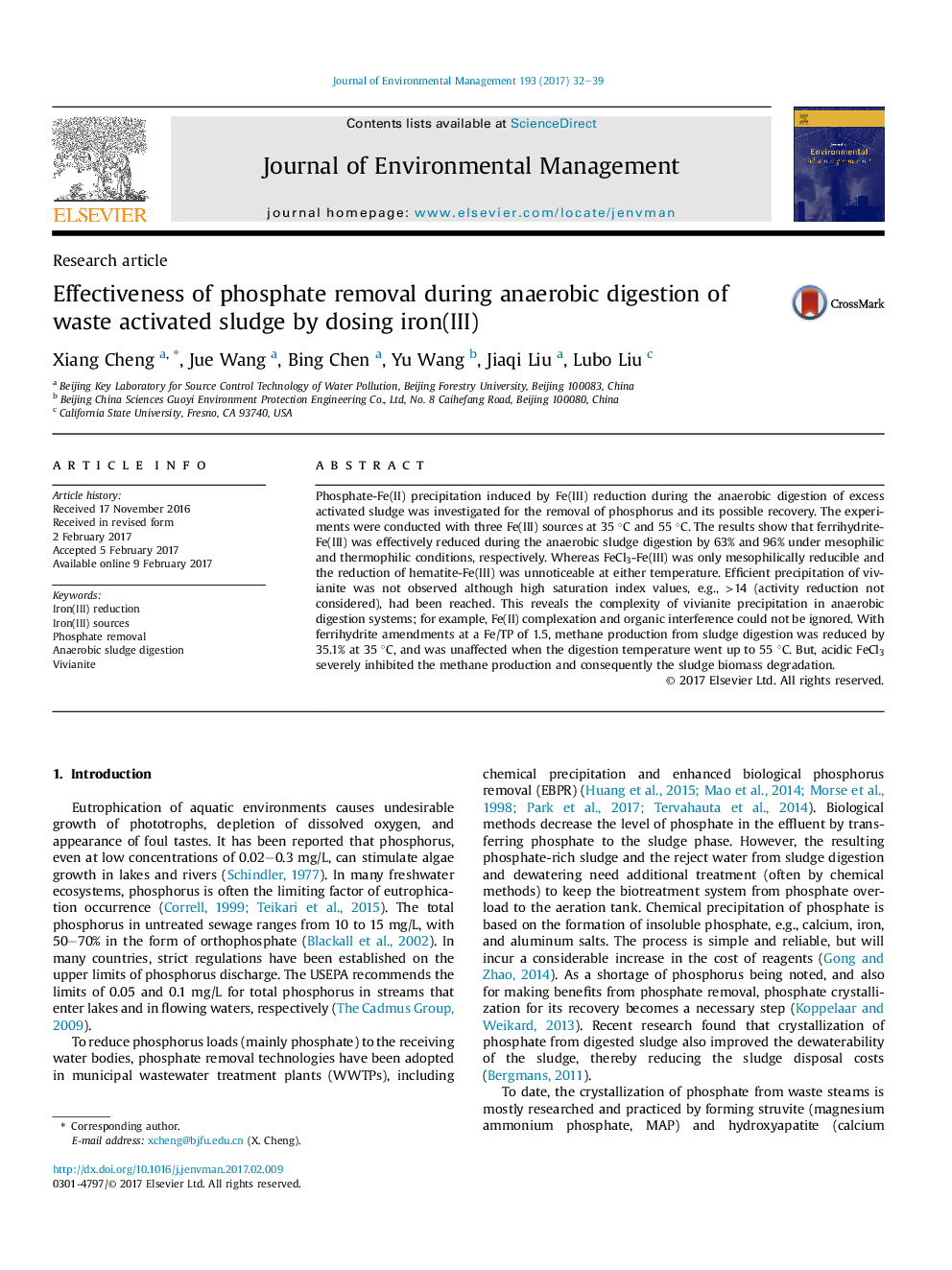| Article ID | Journal | Published Year | Pages | File Type |
|---|---|---|---|---|
| 5116807 | Journal of Environmental Management | 2017 | 8 Pages |
â¢Phosphate-Fe(II) precipitation during anaerobic sludge digestion was studied.â¢Three Fe(III) sources and two digestion temperatures were compared.â¢Ferrihydrite-Fe(III) was efficiently reduced but crystalline hematite not.â¢Vivianite precipitation needs to be enhanced for the complex digestion system.â¢Ferrihydrite dosing at Fe/TP 1.5 reduced methane production by 35.1% at 35 °C.
Phosphate-Fe(II) precipitation induced by Fe(III) reduction during the anaerobic digestion of excess activated sludge was investigated for the removal of phosphorus and its possible recovery. The experiments were conducted with three Fe(III) sources at 35 °C and 55 °C. The results show that ferrihydrite-Fe(III) was effectively reduced during the anaerobic sludge digestion by 63% and 96% under mesophilic and thermophilic conditions, respectively. Whereas FeCl3-Fe(III) was only mesophilically reducible and the reduction of hematite-Fe(III) was unnoticeable at either temperature. Efficient precipitation of vivianite was not observed although high saturation index values, e.g., >14 (activity reduction not considered), had been reached. This reveals the complexity of vivianite precipitation in anaerobic digestion systems; for example, Fe(II) complexation and organic interference could not be ignored. With ferrihydrite amendments at a Fe/TP of 1.5, methane production from sludge digestion was reduced by 35.1% at 35 °C, and was unaffected when the digestion temperature went up to 55 °C. But, acidic FeCl3 severely inhibited the methane production and consequently the sludge biomass degradation.
